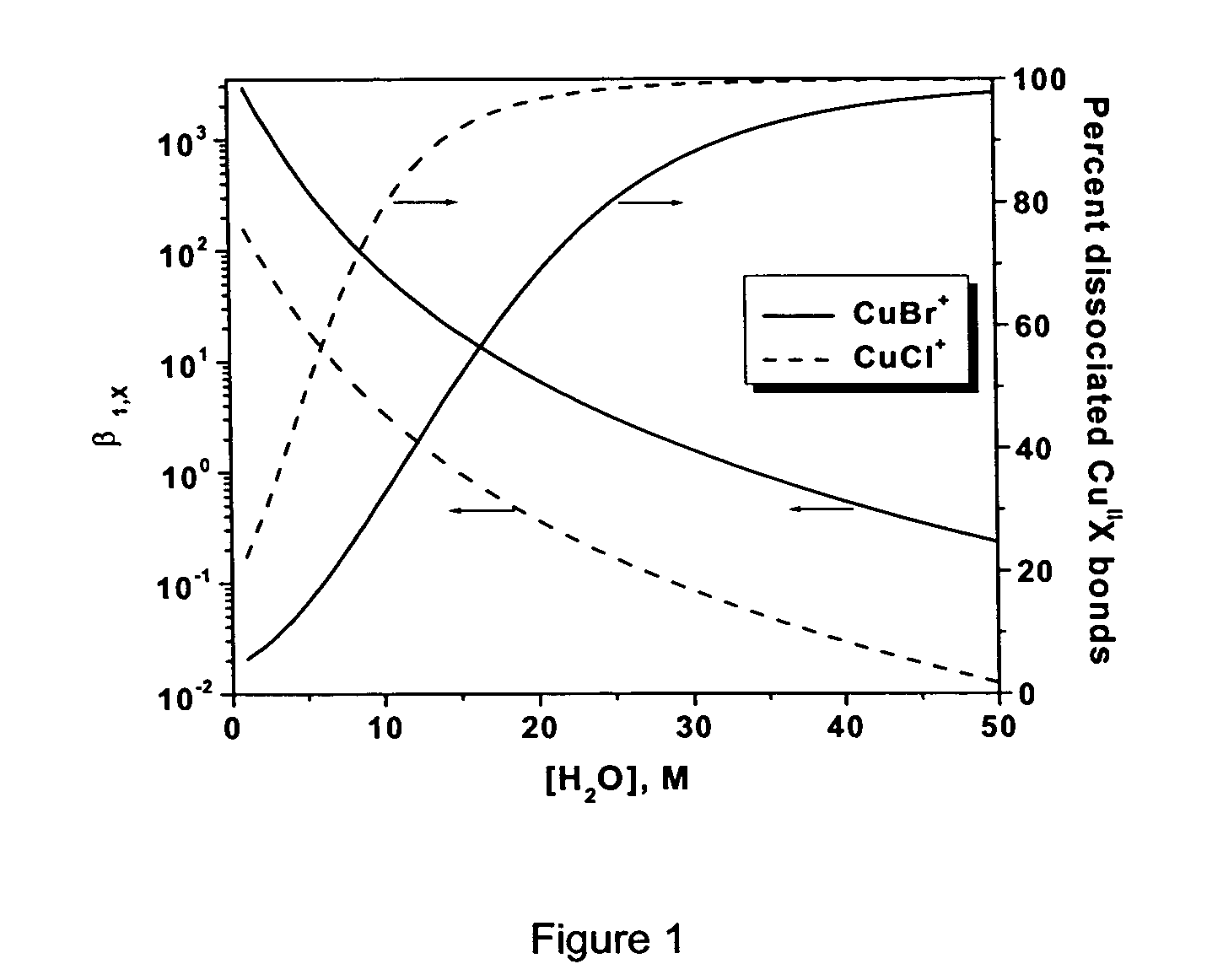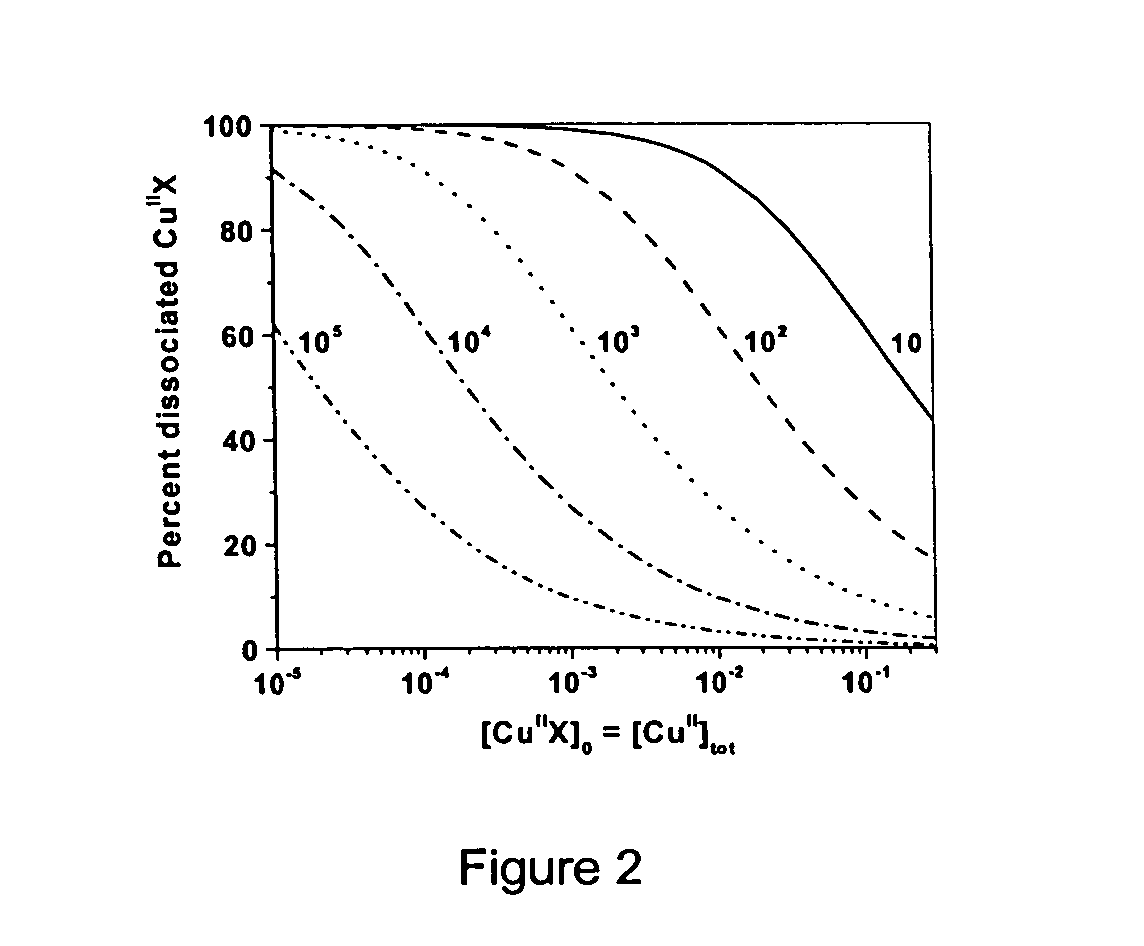Stabilization of transition metal complexes for catalysis in diverse environments
a technology of transition metal complexes and catalysts, applied in the field of stable transition metal complexes for catalysis in diverse environments, can solve the problems of limited ability to tailor transition metal catalysts for and limit the ability to adapt transition metal catalysts to achieve the effect of optimum performance in a broad range of reaction environments
- Summary
- Abstract
- Description
- Claims
- Application Information
AI Technical Summary
Benefits of technology
Problems solved by technology
Method used
Image
Examples
examples
1. Determination of Critical Parameters of Heterodonor Ligand Complexes
1A. Determination of the Chemical Shifts and Stability of the Cu(I) Complexes of Na2EDTDAA, which are to be used for the Aqueous ATRP of Acidic Monomers.
[0186]For this purpose, a series of three solutions were prepared. The solid ligand and CuBr were mixed in a NMR tube, which was then closed with a rubber septum. Vacuum was applied followed by filling the tube with nitrogen several times. Then, deuterated water, purged with nitrogen for 24 h was added, and the tube was sealed. After the CuBr dissolved, NMR spectra of the solutions were taken. The results are presented in Table 1. The two resonance peaks for ligand are observed at 3.38 and 2.96 ppm.
[0187]
TABLE 1δ1,jobs, ppmδ2,jobs, ppmSolution[CuBr], M[Na2EDTDAA], M(δ1,jobs −δ1L)(δ2,jobs −δ2L)19.76 × 10−20.2983.52 (0.14)3.13 (0.17)29.76 × 10−20.1993.58 (0.20)3.19 (0.23)39.76 × 10−20.4483.47 (0.09)3.06 (0.10)
[0188]The plot of δi,jobs−δiL vs. [M]0,j / [L]0,j is shown...
PUM
| Property | Measurement | Unit |
|---|---|---|
| Fraction | aaaaa | aaaaa |
| Fraction | aaaaa | aaaaa |
| Electric potential / voltage | aaaaa | aaaaa |
Abstract
Description
Claims
Application Information
 Login to View More
Login to View More - R&D
- Intellectual Property
- Life Sciences
- Materials
- Tech Scout
- Unparalleled Data Quality
- Higher Quality Content
- 60% Fewer Hallucinations
Browse by: Latest US Patents, China's latest patents, Technical Efficacy Thesaurus, Application Domain, Technology Topic, Popular Technical Reports.
© 2025 PatSnap. All rights reserved.Legal|Privacy policy|Modern Slavery Act Transparency Statement|Sitemap|About US| Contact US: help@patsnap.com



